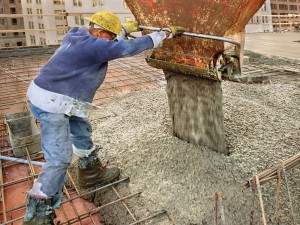
Cement and concrete industry poised to converge on Parliament Hill
By Cement Association of Canada
Construction cement climate change concrete emissions GHG emissions Parliament Hill ready mixed concrete OTTAWA – The Canadian cement and concrete industry is converging on Parliament Hill over the next two days, meeting with Ministers, Members of Parliament, Senators and senior civil servants to convey the importance of its contribution to the economic prosperity of communities across the country and to helping Canadians face the twin challenges of reducing carbon emissions and adapting to climate change.
OTTAWA – The Canadian cement and concrete industry is converging on Parliament Hill over the next two days, meeting with Ministers, Members of Parliament, Senators and senior civil servants to convey the importance of its contribution to the economic prosperity of communities across the country and to helping Canadians face the twin challenges of reducing carbon emissions and adapting to climate change.
“The cement and concrete industry is uniquely positioned to help all levels of government in Canada achieve their climate change priorities, while also ensuring best value for money invested,” says Michael McSweeney, president and CEO of the Cement Association of Canada. “The materials we produce – concrete and concrete products – are essential to all public infrastructure projects due to their renowned strength, durability, resilience and versatility. Far less well known is that our sector is also leading the clean economy transition, improving our environmental profile through constant innovation, and rapidly emerging as a massive cleantech opportunity for Canada to leverage.”
More than 60 industry delegates hailing from all regions across the country and representing the broad spectrum of cement and concrete manufacturers in Canada are gathering on Parliament Hill. The delegation includes the CEOs of Canada’s cement industry and representatives from the ready mixed concrete, insulated concrete forms, masonry, precast concrete and precast concrete pipe sectors.
In their meetings with elected officials and senior civil servants, the delegates will highlight:
- the enormous economic benefits provided by the cement and concrete industry to local communities
- how using a “three-screen” lifecycle criteria for federally funded infrastructure investments before the funds are transferred to provincial and municipal governments will help ensure the taxpayers’ investment in infrastructure is spent most appropriately.
These three screens are:
- Lifecycle Cost Assessment: using building materials that last the longest
- Lifecycle Assessment: choosing building materials that deliver the lowest carbon footprint
- Best Available Solution: using the best available approaches, technologies or designs.
“As the federal government embarks on an unprecedented level of investment in public infrastructure, it is incumbent upon us to ensure that our country’s leaders are fully aware of the vital role our industry can play in the transition to a low-carbon, climate-resilient economy,” adds Mr. McSweeney. “Our delegation on the Hill this week will do just that.”
The concrete industry is a major, indispensable participant in Canada’s economy, contributing over 151,000 direct and indirect jobs across the country and $73 billion in direct, indirect and induced economic impact. It is present in virtually every community across the country.
SOURCE Cement Association of Canada




